Read this page in Welsh / Darllenwch y dudalen hon yn Gymraeg
Swansea Canal - What Remains?
Delve into the rich history of the Swansea Canal and discover some of the key landmarks still in existence today as part of the What Remains project.
As part of the SC225 activities, celebrating the 225th anniversary of the canal in partnership with the Swansea Canal Society, What Remains offers a fascinating historical insight of some of the key structures that still remain along the once 16.5 mile long canal.
Although only five miles of the canal remains in water today, a number of structures tell the story of the canal and its roots from originally being built to serve collieries, iron works and copper works in the Tawe valley.
Using the heritage markers on the map, discover more about the remaining structures with the image gallery and information about each landmark below.


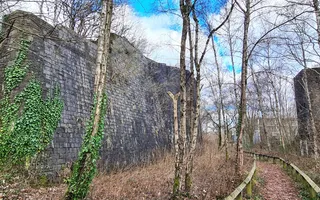

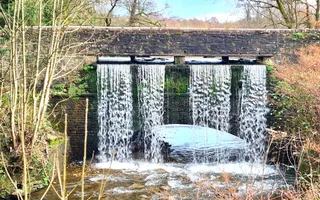
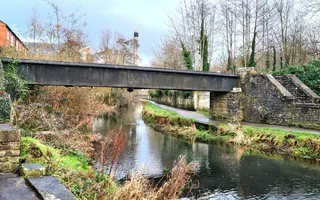
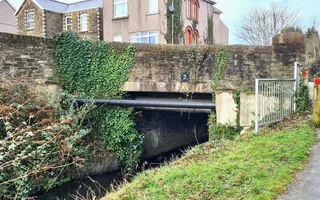
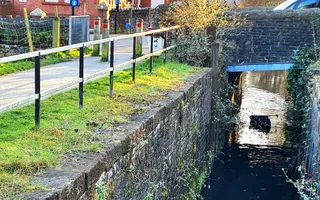
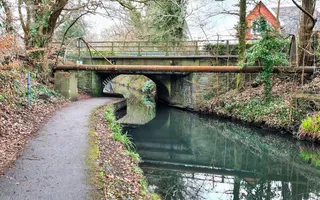
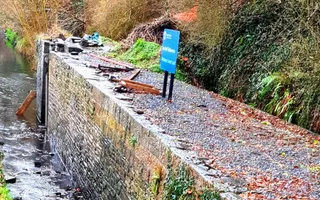
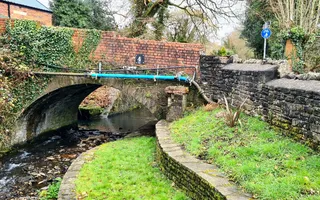
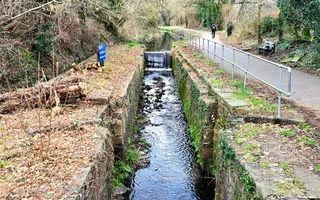
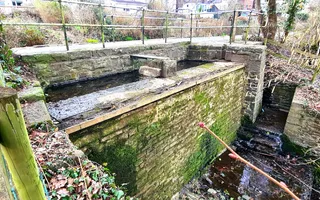
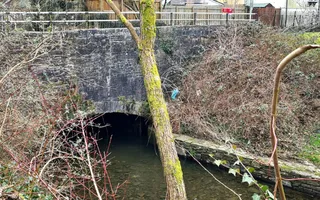
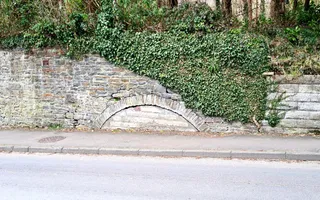
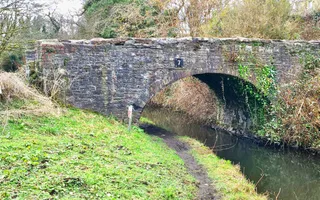
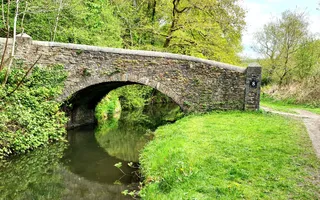
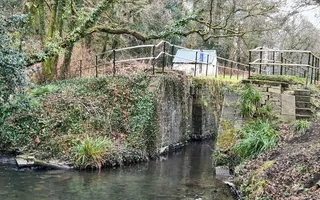
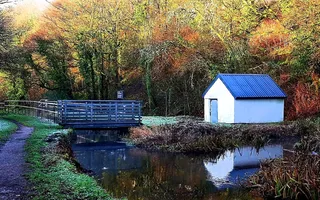

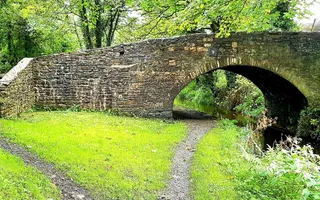
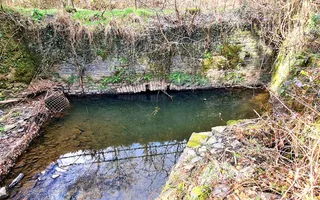
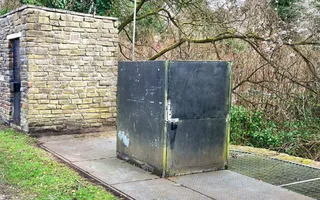
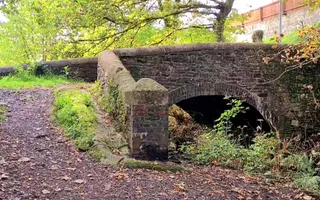
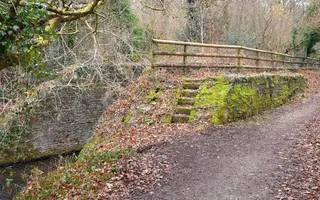
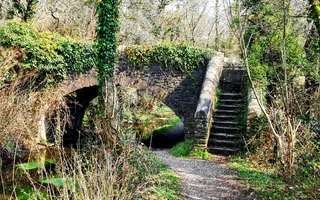
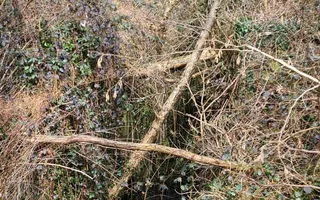

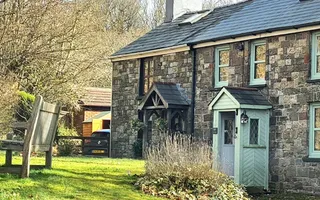
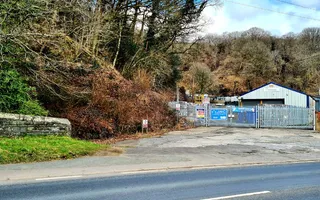
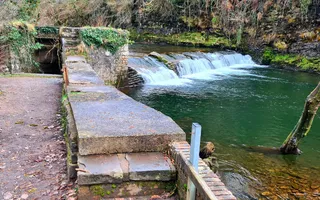
1. Hafod Limekiln
1. Hafod Limekiln
Lime was used widely in the 19th century for agricultural improvement and also for building work and the copper smelting process. This is the only standing survivor of 54 limekilns found along the banks of the Swansea Canal.

2. Remains of Viaduct over Canal at Hafod Copperworks
Formerly these walls, constructed from copper slag blocks, carried a tramway across the canal from the Hafod Copper Works

3. Morriston Overbridge
This is an example of a ‘roving bridge' located where the towpath switches to the opposite side of the canal. A horse towing a boat was able to cross over and then under the bridge without having to detach the line.

4. Lower Clydach Aqueduct
This Grade II listed aqueduct is combined with a spill weir to keep the canal at a constant level and marks the beginning of the section still in water.

5. Pont John Bridge
A unique example of an iron toll bridge and listed Grade II. It was built in the 1880s to allow workers to cross over the canal from Clydach to the Ynyspenllwch Tinplate Works on the other side.

6. Mond Bridge
Also known as Pont Nant Lowrog, an arched masonry bridge carrying the former turnpike road over the canal. After it was widened in the early 20th century, the gates of the lock just after the bridge had to be modified.

7. Mond Lock No 6
Named after the adjacent Mond Nickel Refining Works, the lower gates of this lock were so close to the bridge that there was no room to swing balance beams. Instead, the gates were open and shut with an ingenious system of ropes and pulleys.

8. Coedgwilym Bridge
The towpath passes under this bridge which has been widened on both sides since it was built, but the original arch is still clearly visible.

9. Trebanos Lower Lock No 8
Locally known as Green Lock after the adjacent Green Farm, this structure has undergone significant restoration by canal volunteers in recent years.

10. Trebanos Bridge
The arched masonry bridge separating Trebanos Upper and Lower Locks formerly provided access from the settlement to the Pheasant Bush Tinplate Works on the east side of the canal.

11. Trebanos Upper Lock No 9
Known locally as Duke's Lock after its location at Craig-y-Duke. This lock has also been considerably restored by canal volunteers in the last few years.

12. Trebanos Outfall & Sluice
A Grade II listed overflow carrying surplus water from the canal down to the River Tawe. Formerly it also provided a source of power for the Pheasant Bush Tinplate Works next to Trebanos Locks.

13. Upper Clydach Aqueduct
This structure, listed Grade II, carries the canal over the Upper Clydach in the centre of Pontardawe. In the 19th century a branch canal just below the aqueduct led to wharves for the Pontardawe Tinplate Works and tramroad from the Primrose Colliery.

14. Remains of Limekiln at Holly Street
Only the entrance arch of this former limekiln survives in Holly Street running parallel and just below the canal. The kiln would have been loaded from the towpath above with layers of limestone rock and coal transported by boat from quarry and mine.

15. Ynysmeudwy Isaf Farm Bridge
One of three farm access or accommodation bridges between Pontardawe and Ynysmeudwy, all listed Grade II. This one is at the Isaf or Lower Farm.

16. Ynysmeudwy Ganol Farm Bridge
This bridge is at the Ganol or Middle Farm. It was also known as Bont Niclas after the mariner Captain Nicholas who owned the farm from the 1890s onwards.

17. Ynysmeudwy Lower Lock No 12
This lock was extensively restored by canal volunteers in the 1980s. Now in a tranquil setting, for fifty years until 1920 it was adjacent to a busy Patent Fuel works compressing poor quality coal with pitch.

18. Ynysmeudwy Lengthsman's Hut
The last example of a canal lengthsman's hut, recorded in 1826 in the canal company Minute Books as a one room lock keeper's residence. It formerly had a slate roof now replaced in metal.

19. Ynysmeudwy Upper Lock No 13
Although this lock is paired with the Lower Lock, it was built by a different contractor and differs in width, one of the hazards of employing multiple masons to work separately on the initial canal construction.

20. Ynysmeudwy Uchaf Farm Bridge
This bridge provided access to the Uchaf or Upper Farm. The underside is supported by pre-formed railway lines to cater for heavy vehicles travelling to the nearby Bryn Tinplate Works.

21. Nant Du Aqueduct
A small aqueduct listed Grade II carrying the canal over the Nant Du stream and lying almost opposite the former Ynysmeudwy Pottery which ran from 1845-1877.

22. Cwmdu Outfall & Sluice
Another historic water control feature also listed Grade II but not easily visible as its masonry structure is covered now by steel plates and a modern control box.

23. Corbwyll Bridge
The bridge, also known as Cilmaengweyn Overbridge, provided access to the Corbwyll smallholding. This section of the canal has been designated a Local Nature Reserve by Neath Port Talbot Council.

24. Cilmaengwyn Lock No 14
A surviving lock associated with the community of Cilmaengwyn created around 1900, but originally known as Cwm-Tawe-Isaf Lock after the neighbouring farm.

25. Cwmtawe Isaf Farm Bridge
A Grade II listed accommodation bridge providing access for the adjacent farm with a stone slab stile at the top of the steps from the towpath. A short way above this point the towpath ends and the canal is partially culverted.

26. Thick's Lock No 17
Named after Mr Thick, a neighbouring farm owner, this was formerly an important location with a dry dock and repair yard adjacent to the lock, but is now heavily overgrown and partially covered by spoil. The site is listed Grade II and a scheduled monument.

27. Twrch Aqueduct
The most significant structure remaining on the Swansea Canal is rightly listed Grade II* as well as being a scheduled monument. it crosses the Afon Twrch at Ystalyfera and now lies on the National Cycle Network (Swansea Bay) Route 43.

28. Lock Cottages Ystradgynlais
A pair of lock cottages at Ynys Uchaf on the north side of Ystradgynlais, lying opposite the line of the canal which has since been covered by the main A4067 road. The privately owned dwellings can be easily seen from the public highway.

29. Gwaunclawydd Dock & Remains of Canal Wall
This was the upper terminus of the canal. The dock has been filled in and is now an industrial site but historic evidence such as a section of canal wall can still be seen alongside the main road to Brecon.

30. Weir & Feeder Abercraf
The weir built over the Afon Tawe provided a permanent water supply for the canal, with a feeder channel to carry the water 1200 metres down to the terminus at Glaunclawydd Dock. The masonry survives as well as the date 1842 carved in stone on the face of the weir, indicating when it was rebuilt. Access is by a footpath from Abercraf village.

Last Edited: 22 April 2024


Stay connected
Sign up to our newsletter and discover how we protect canals and help nature thrive

